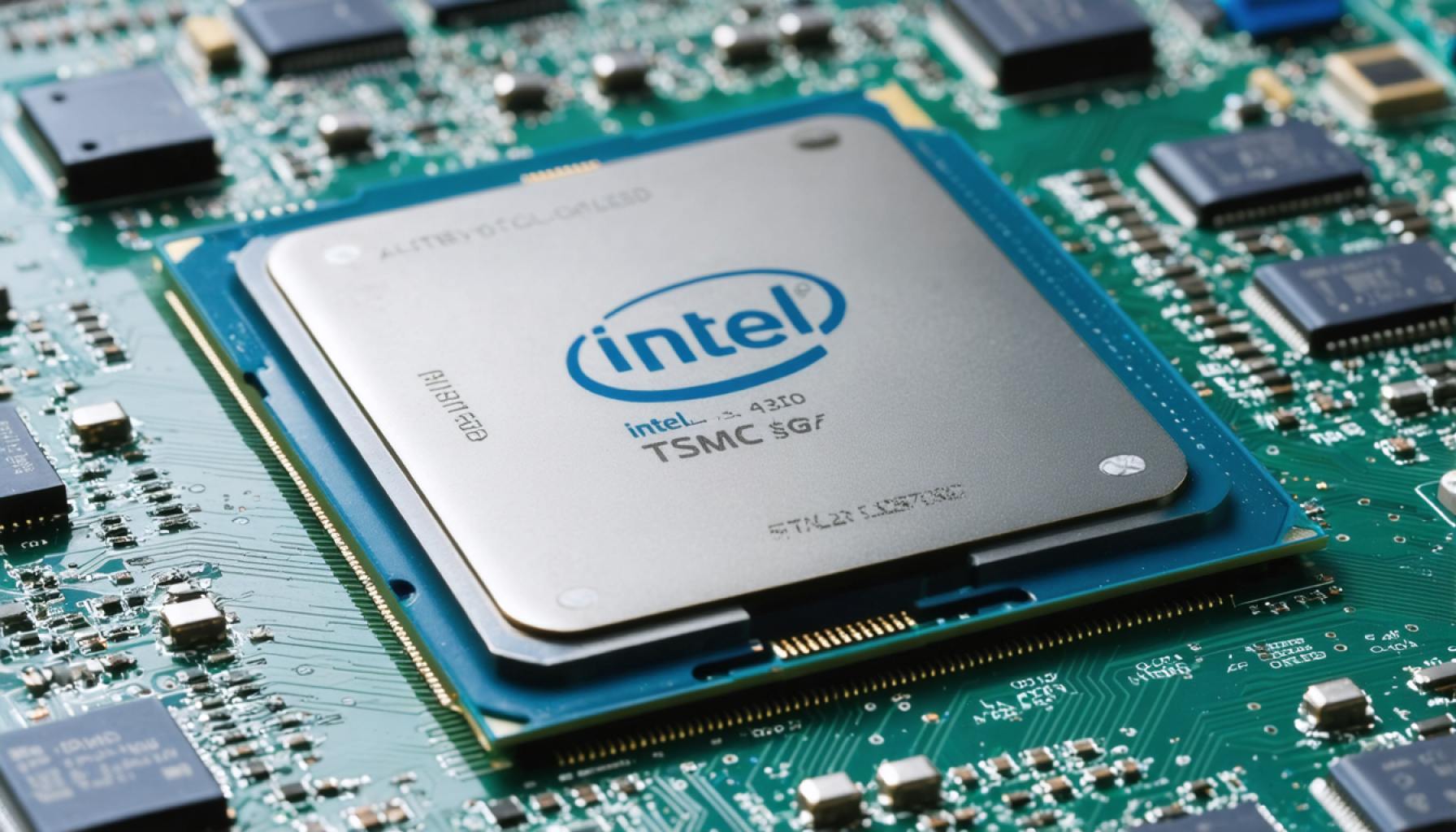- Intel is planning a strategic partnership with Taiwan Semiconductor Manufacturing (TSMC), involving a novel entity where TSMC holds a 20% stake in Intel’s manufacturing facilities.
- This alliance aims to invigorate Intel’s foundry operations, benefiting from TSMC’s technological expertise and injecting new energy into Intel’s corporate culture.
- The partnership faces significant challenges due to geopolitical tensions, particularly the new 34% tariff imposed by China in response to U.S. policies.
- These tariffs threaten to impact Intel’s market position and profitability in China, presenting opportunities for local competitors.
- Intel’s transformation journey highlights the importance of strategic agility and innovation in navigating the complexities of global trade dynamics.
- The outcome could significantly influence Intel’s future and reshape the semiconductor industry landscape.
A quiet revolution in the tech world seems to be brewing, as Intel, long a titan of the semiconductor industry, attempts a bold reincarnation. The chipmaker has ventured into fresh waters, planning a formidable alliance with Taiwan Semiconductor Manufacturing (TSMC), a beacon of technology innovation. However, dark clouds in the form of geopolitical unrest are threatening to cast a long shadow over what could be a game-changing moment for Intel.
Imagine a landscape where two giants join forces to carve a new path in silicon warfare. Intel’s recent proposal, still in its infancy, involves handing over the reins of its semiconductor manufacturing facilities to a new entity where TSMC would hold a 20% stake. Such a collaboration could inject dynamism and vitality into Intel’s struggling foundry operations, tapping into TSMC’s formidable technical prowess.
For years, Intel has grappled with sluggishness and leadership hesitance, witnessing its rivals accelerating past. A potential synergy with TSMC offers not just technological refinement but a cultural rejuvenation—stimulating the lethargic pulse of Intel’s corporate machinery.
But as with many great stories, there is a twist. While the potential deal with TSMC electrifies Wall Street with possibilities, this optimism is doused by the ongoing trade frictions between the U.S. and China. The imposition of a chilling 34% tariff by China, a retaliatory maneuver against recent U.S. policy decisions, looms large.
Intel, with its significant business in the expansive Chinese market, faces existential questions regarding its competitive footing. The new tariffs threaten to narrow margins and erode its position, giving local competitors a golden opportunity to stage their coup.
Ultimately, Intel’s battle isn’t purely technological. It’s a chess game of epic proportions that requires strategic brilliance to navigate the stormy seas of trade discourse. As it stands poised between enormous potential and precarious challenges, Intel’s journey emphasizes a critical narrative of resilience against external adversities.
The unfolding saga underscores a fundamental truth: Within any industry, innovation remains pivotal, but adopting nimble strategies in volatile global situations is paramount. The transformation Intel yearns for could define not just its future but also reshape the semiconductor arena, should it rise triumphantly over these hurdles.
Could Intel and TSMC’s Partnership be the Future of Semiconductors?
A New Era for Intel and TSMC
Intel, a long-standing powerhouse in the semiconductor industry, is embarking on a new chapter alongside Taiwan Semiconductor Manufacturing Company (TSMC). This potential alliance could revolutionize the semiconductor landscape, as Intel looks to capitalize on TSMC’s advanced fabrication technology while fortifying its struggling foundry operations.
Background and Objectives
For decades, Intel dominated the semiconductor landscape, but recent years have seen challenges as competitors like AMD, NVIDIA, and TSMC gained ground. Intel’s proposed partnership includes a plan where TSMC would acquire a 20% stake in a new entity, potentially revitalizing Intel’s production capabilities and market position.
The Geopolitical Tangle
Despite promising prospects, geopolitical tensions, particularly between the U.S. and China, pose significant hurdles. China’s recent imposition of a 34% tariff on U.S. tech products could impact Intel’s operations and profitability in the region. The tariffs, a response to ongoing trade skirmishes, threaten Intel’s margins and competitive stance, particularly in China’s growing market.
Why TSMC?
TSMC is a leader in advanced node manufacturing, outpacing many in terms of efficiency and technology. By leveraging TSMC’s expertise, Intel aims to overcome its recent production delays and technological setbacks, potentially leapfrogging ahead of competitors.
How-To Navigate the Tariff Challenge
1. Diversify Supply Chains: Intel could mitigate risks by diversifying supply chains to reduce dependency on regions affected by tariffs.
2. Localize Production: Establishing manufacturing capabilities closer to major markets outside of China might lessen the immediate impact of current tariffs.
3. Invest in R&D: Accelerating research and development to stay ahead of the curve could reduce reliance on contentious markets.
Market Forecasts & Industry Trends
The semiconductor industry is projected to grow exponentially, driven by demand for AI, IoT, and automotive technologies. Forging strategic alliances like the one proposed could be pivotal for Intel to maintain relevance.
According to a report by Fortune Business Insights, the global semiconductor market size is expected to reach USD 730.29 billion by 2026. This partnership between Intel and TSMC could catalyze further innovation and competition within the industry.
Pros & Cons Overview
Pros:
– Access to superior manufacturing techniques.
– Potential for increased market share.
– Enhanced competitiveness and innovation.
Cons:
– Risk from geopolitical instability.
– Potential regulatory hurdles.
– Cultural and operational integration challenges.
Actionable Recommendations
– Stay Informed: For investors and industry watchers, staying informed about geopolitical developments, especially U.S.-China relations, is crucial.
– Evaluate Diversification Strategies: Businesses in affected industries should seriously consider supply chain diversification.
– Support Innovation: Continued support for innovation and agile strategic adjustments can ensure resilience in volatile markets.
Final Thoughts
Intel and TSMC’s potential partnership isn’t just about collaborative advantage; it reflects broader trends in global technology collaboration amidst geopolitical realities. Whether Intel can successfully navigate these challenges will determine its future trajectory and impact the semiconductor industry at large.
For industry updates and further insights, visit the Intel homepage and TSMC homepage.
